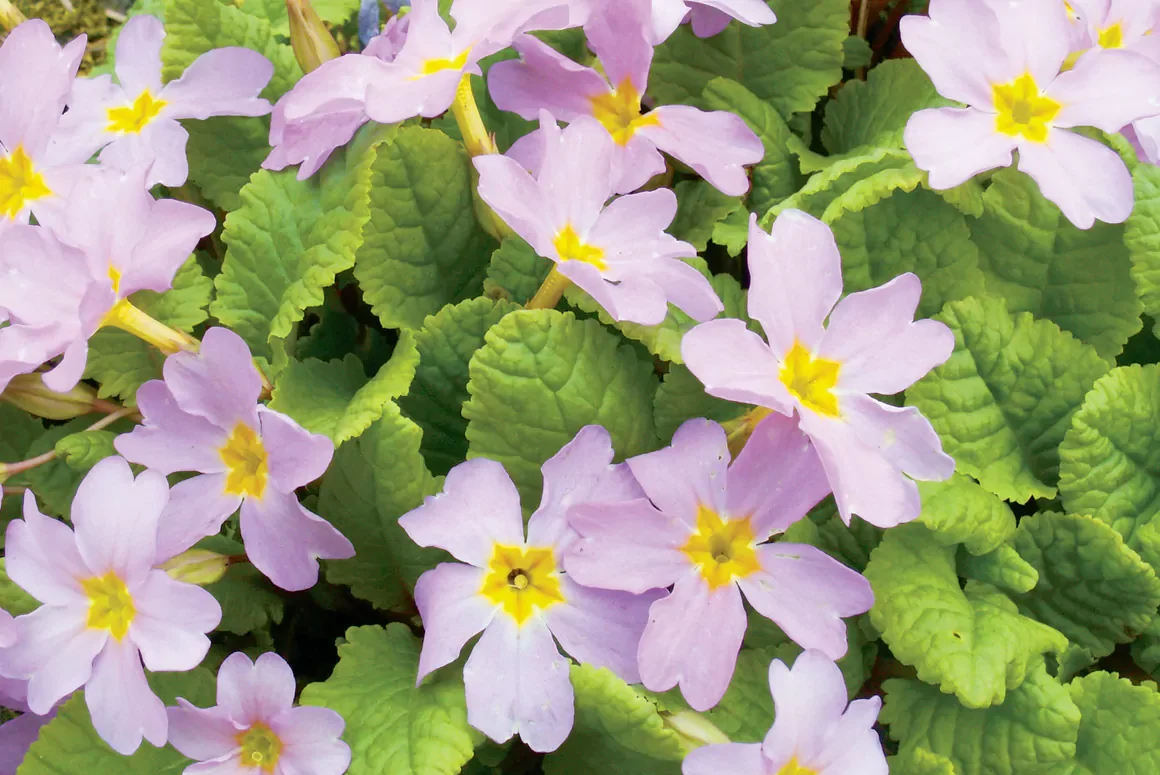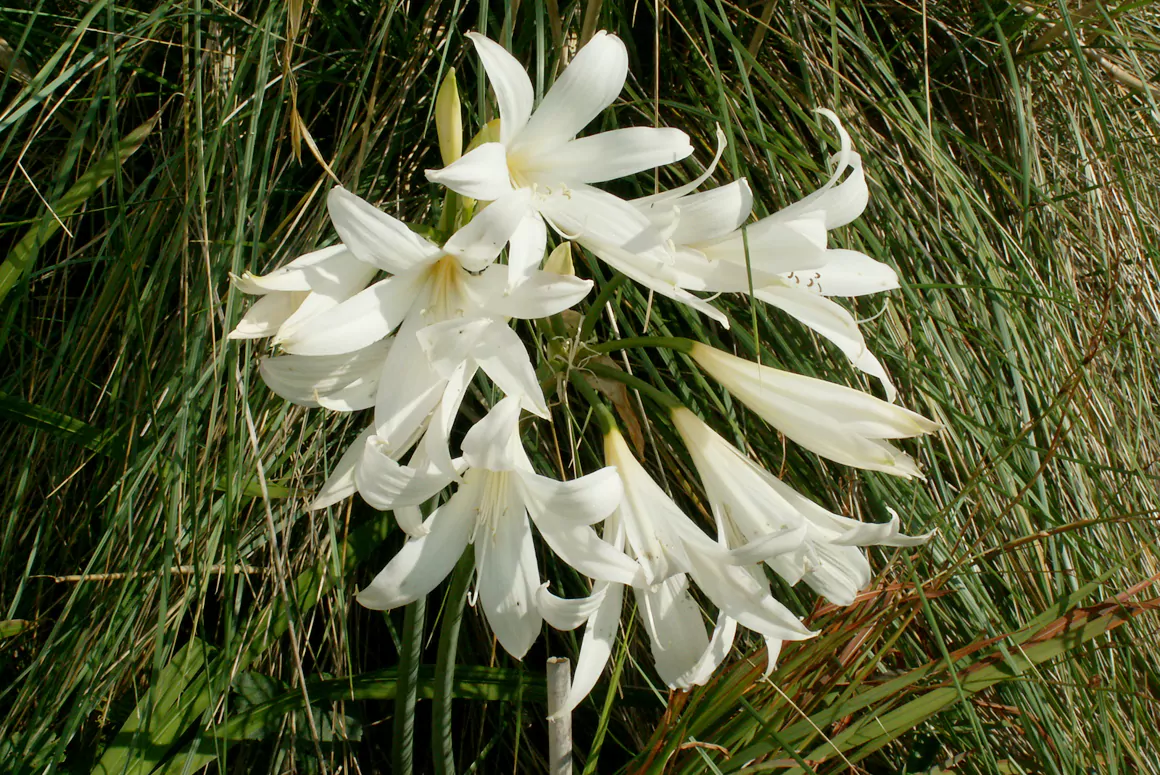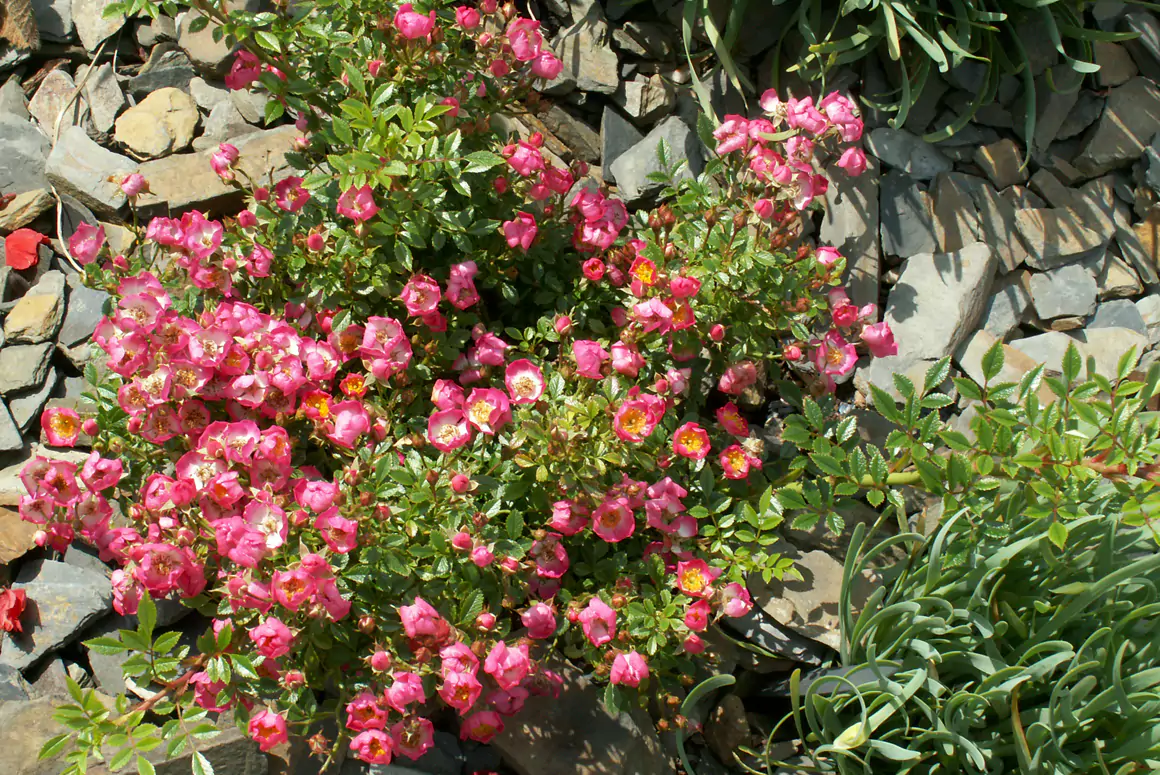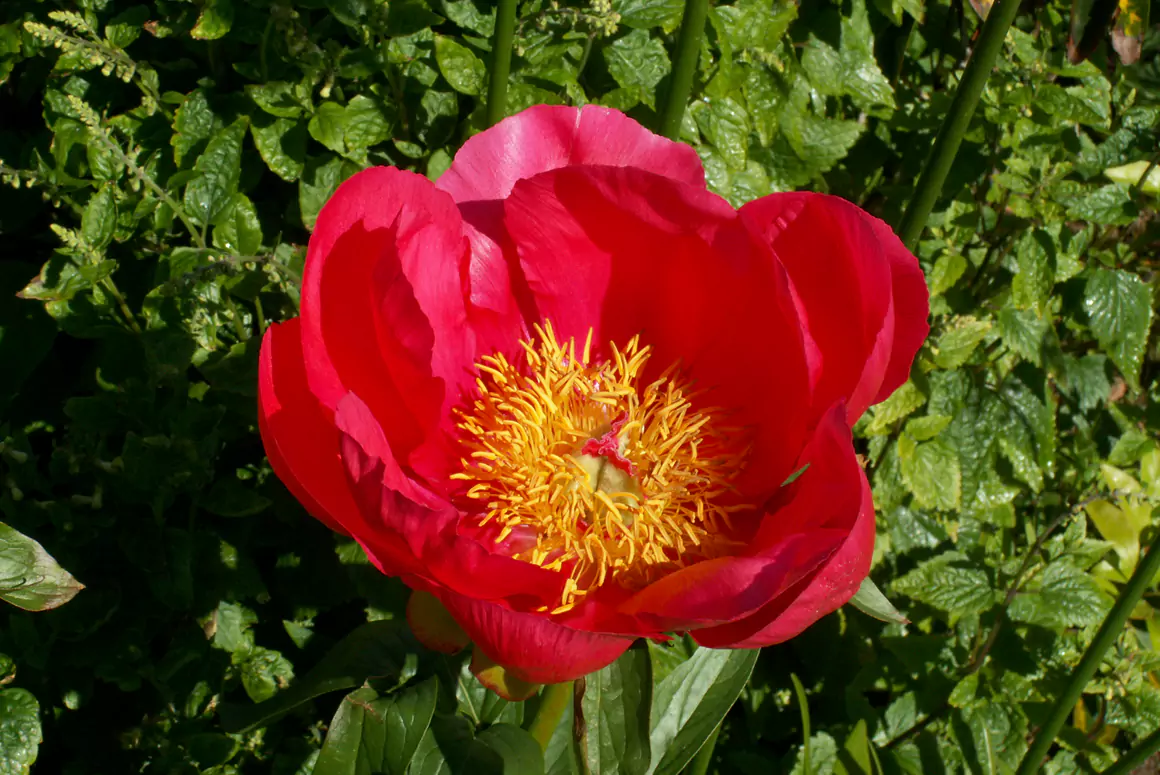![]()
Warm summer sun, shine kindly here,
Warm summer wind, blow softly here.
Green sod above, lie light, lie light.
Good night, dear heart, good night, good night.
Mark Twain (1835-1910)
Although I have a relatively small garden I manage to grow a number of large trees and shrubs which provide structure. However, I have to admit that much of my delight nowadays derives from some of the smaller residents of my garden, many of which grow in the shelter of the trees and shrubs.

We are all familiar with our native primrose, Primula vulgaris, and as one of our first native plants to flower, it is beloved as a harbinger of spring. Less well known is its Balkan subspecies Primula sibthorpii which is equally early into bloom, but with soft lilac pink flowers enhanced by a distinctive yellow eye. As easy to grow as the type plant, and, although reluctant to self seed, is readily propagated by division.
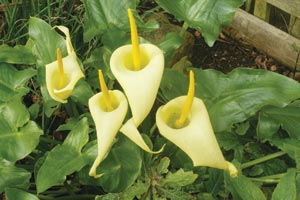
Another well known native is Arum maculatum, Lords and Ladies, whose unusual shaped flowers have coined its alternative name Jack in the pulpit. A more decorative member of this family is Arum creticum, which despite its origins in Crete, has proved very hardy. Leaf growth commences in autumn, whilst the spring flower has a pale yellow spathe enclosing the emergent deep yellow spadix with a sweet fragrant scent. Easily grown in a humus rich soil with good drainage, flowering is enhanced in the sun.

Continuing the theme, Cardamine pratensis, Lady’s smock, is another well loved inhabitant of our ditches and damp spots. In Western and Central Europe we find Cardamine pentaphylla which is a larger and more robust version. It has large light purple flowers which appear early in the year atop leafy stalks which die back in the summer. It is essentially a woodlander requiring a degree of moisture but otherwise easy to grow.
All the above plants are unlikely to be found in garden centres but are easily available from online nurseries at a reasonable cost.
Although I have a relatively small garden I manage to grow a number of large trees and shrubs which provide structure. However, I have to admit that much of my delight nowadays derives from some of the smaller residents of my garden, many of which grow in the shelter of the trees and shrubs.
We are all familiar with our native primrose, Primula vulgaris, and as one of our first native plants to flower, it is beloved as a harbinger of spring. Less well known is its Balkan subspecies Primula sibthorpii which is equally early into bloom, but with soft lilac pink flowers enhanced by a distinctive yellow eye. As easy to grow as the type plant, and, although reluctant to self seed, is readily propagated by division.

Another well known native is Arum maculatum, Lords and Ladies, whose unusual shaped flowers have coined its alternative name Jack in the pulpit. A more decorative member of this family is Arum creticum, which despite its origins in Crete, has proved very hardy. Leaf growth commences in autumn, whilst the spring flower has a pale yellow spathe enclosing the emergent deep yellow spadix with a sweet fragrant scent. Easily grown in a humus rich soil with good drainage, flowering is enhanced in the sun.
Continuing the theme, Cardamine pratensis, Lady’s smock, is another well loved inhabitant of our ditches and damp spots. In Western and Central Europe we find Cardamine pentaphylla which is a larger and more robust version. It has large light purple flowers which appear early in the year atop leafy stalks which die back in the summer. It is essentially a woodlander requiring a degree of moisture but otherwise easy to grow.
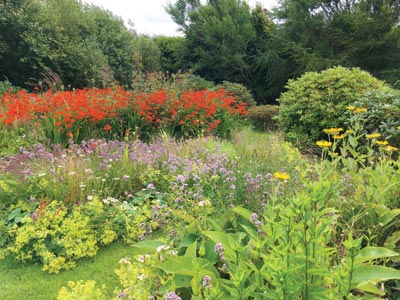
All the above plants are unlikely to be found in garden centres but are easily available from online nurseries at a reasonable cost.
Regular readers of this column will know that the remainder of this article normally showcases gardens throughout Wales that open under the National Garden Scheme. You will not need any reminder that the current Coronovirus (Covid-19) crisis has put a lockdown on open gardens until further notice. So, sadly, you won’t be able to visit our May and June Welsh gardens but we thought you would still enjoy some of their photos. This is the first time in its 93-year history that all gardens have been closed.

The National Garden Scheme gives visitors unique access to over 3,700 exceptional private gardens in England and Wales and raises impressive amounts through admissions, teas, and of course cakes! Its support for nursing, health and community-based charities is full of stories of hope and of people coming together to create peaceful spaces, reduce isolation and find respite.
It is probably an appropriate time to lay to rest a widespread misconception that monies collected under the NGS are largely used to support gardening charities. Although some funds are donated to charities which create gardens for the benefit of communities or patients, such as Horatio’s Gardens at spinal injury centres, the vast majority of the monies, normally in excess of £3 million annually, is allocated to nursing and health charities. The Scheme is now the most significant charitable funder of nursing charities in the U.K. and beneficiaries include Macmillan Cancer Support, Marie Curie and Hospice U.K. amongst others.

Despite the current crisis the NGS Trustees are still able to commit in excess of £1 million to its beneficiary charities. “The current climate of uncertainty and the loss for the foreseeable future of garden openings which provide 90% of our income, compounded by a poor start to the season with storms affecting many of the stunning snowdrop gardens, means that the National Garden Scheme has been unable to distribute as much as it would like to our beneficiary charities.” said CEO, George Plumptre. “However, we are still donating in excess of £1 million to the majority of our nursing and health beneficiaries this spring and are delighted to be able to announce the tripling of funds to community gardens that make such a positive impact on the health and wellbeing of so many”.
With a significant fall of income inevitable, people can continue to help to support our nurses, by making a donation in lieu of a garden visit at: ngs.org.uk/help-support-our-nurses

You may no longer be able to see our gardens in person but you can still enjoy “Virtual garden visits” and receive garden tips and tutorials on the NGS website: ngs.org.uk/virtual-garden-visits
My own opening in June is of course cancelled but my garden, The Boarlands, Port Eynon, is presently producing a jaw dropping Puya chilensis with six 10 feet high flower spikes. It is normally grown under glass in the U.K. but my own plant was raised from seed and has been growing outdoors for 10 years. It will be very impressive but only visible to locals who walk by the garden.
We are presently restricted under the lockdown regulations but at some time in the future we hopefully will again have the opportunity to visit wonderful gardens and by so doing raise funds for our treasured NHS.
Virtual Garden Visits
When our beautiful gardens are closed, the National Garden Scheme and its garden owners are working to bring the gardens to life for you with virtual garden visits, gardening tips and great stories. Our nursing and health beneficiaries face an 80% reduction in our support at a time when they need it most. Please consider making a donation to help us to help them.
How It Works
Each week, on a Thursday, we will release a new collection of virtual garden visits on the National Garden Scheme website: ngs.org.uk/virtual-garden-visits
You can sign up to receive weekly information about the virtual garden visits direct to your inbox: ngs.org.uk/sign-up
You can follow the National Garden Scheme on:
Instagram: @nationalgardenscheme
Twitter: @NGSOpenGardens
Facebook: @NationalGardenScheme
Our appeal hashtag is #HelpSupportOurNurses
You can donate to the appeal on the NGS website: ngs.org.uk/help-support-our-nurses


